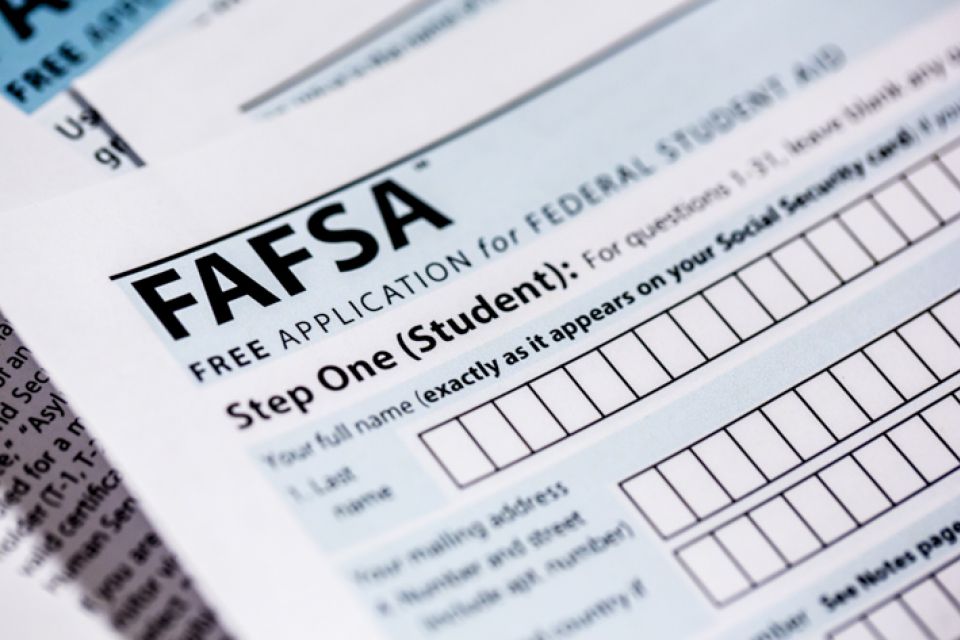With financial aid critical to many of California’s low-income youth and students of color seeking to attend college, a new report from the Education Trust–West finds that the students who would benefit the most are attending high schools with some of the lowest application completion rates for the Free Application for Federal Student Aid.
While schools and districts in some areas have made progress, the authors of Hidden Figures: A Framework to Increase Access to Financial Aid find that much more can be done to increase the awareness of financial aid programs among students, especially those who are low-income and/or students of color. Progress could particularly benefit black students, whose average FAFSA completion rate of roughly 39 percent lags well below the state average of 54 percent.
“Schools and districts must do more to address racial equity gaps in financial aid completion rates,” the report states. “If they don’t, nearly $550 million in federal and state aid will remain left on the table that could have been supporting students’ postsecondary aspirations and success.”
Overall, despite educating roughly one in 10 K-12 students in the country and graduating more students from high school than any other state, California ranks 30th nationally in its financial aid application completion rate.
In response, the Education Trust–West partnered with the California Student Aid Commission in a research study to share five promising practices and strategies with local educational agencies in hopes of improving FAFSA submission rates.
How LEAs can make a difference
- Prioritizing completion through policy: In addition to making the completion process a component of graduation (see section below), successful strategies reported by districts include incorporating financial aid training into existing curriculum and providing individualized meetings with students.
- Collecting and monitoring appropriate data: By collecting and monitoring financial aid information, officials can identify which students are not completing applications and target resources toward them. Common student groups that need extra support are homeless, first-generation and foster youth.
- Establishing and maintaining strong partnerships: Use California’s abundance of community-based and ed tech organizations to increase financial aid awareness and college access. Tools include personalized text or email notifications reminding students and their families to complete forms.
- Building trusting relationships: Because financial aid applications require personal documents and identification numbers, “building relationships and trust with parents and communities is critical to ensure students feel comfortable filling out a form.”
- Student-centered programming: Design systems, tools and events targeted toward students who might not otherwise complete an application. For example, provide incentives and rewards to engage, recognize and celebrate students.
FAFSA completion as a graduation requirement?
While many districts push students to fill out financial aid forms, Val Verde Unified School District became the first in the state to make the task a graduation requirement. Most of the Riverside County district’s 20,000 students come from low-income families and would be eligible for aid if they applied, Superintendent Michael R. McCormick recently told EdSource. Parents and students who do not wish to participate can sign an opt-out form, and district policy states no student will be denied a diploma if they follow that protocol.
The Education Trust–West’s report also highlights the successes of Val Verde USD’s initiative. “To make sure the implementation of the policy benefits the lives of the districts’ students and families, district leaders also provide a network of resources to support counselors and teachers,” the report states. “These efforts have contributed to an increase in financial aid application completion with no negative impact on graduation rates.”
Moving forward, among Val Verde USD’s 2019–20 board of education goals is maintaining a FAFSA submission rate of 97 percent at its three comprehensive high schools.
Efforts to address the issue are also well underway at the State Capitol. Assembly Bill 1617 (Reyes, D–San Bernardino) would require that completing and submitting a FAFSA application be a condition for receiving a high school diploma, while allowing opt-out requests submitted to LEAs. CSBA does not currently have a position on the legislation.
Reyes’ new legislation comes on the heels of her Assembly Bill 2015 from 2018, which was signed by Gov. Jerry Brown. The law requires that starting in the 2020–21 school year, all LEAs must ensure every student receives information on how to properly complete a financial aid application at least once before entering the 12th grade.
Elsewhere in the U.S., starting with the 2017–18 school year, Louisiana became the first state to mandate high school students to complete a FAFSA or state aid application (also allowing opt outs).





